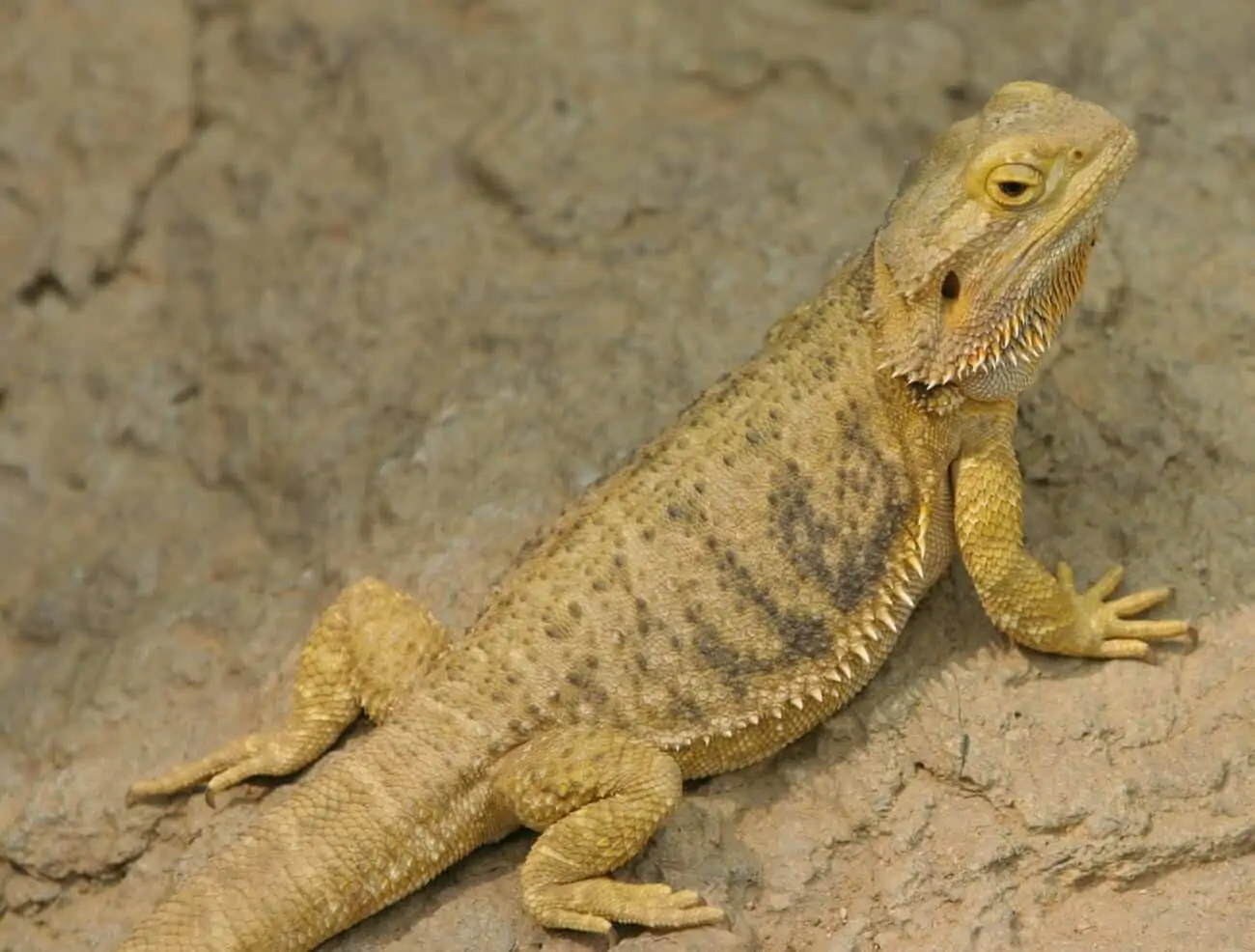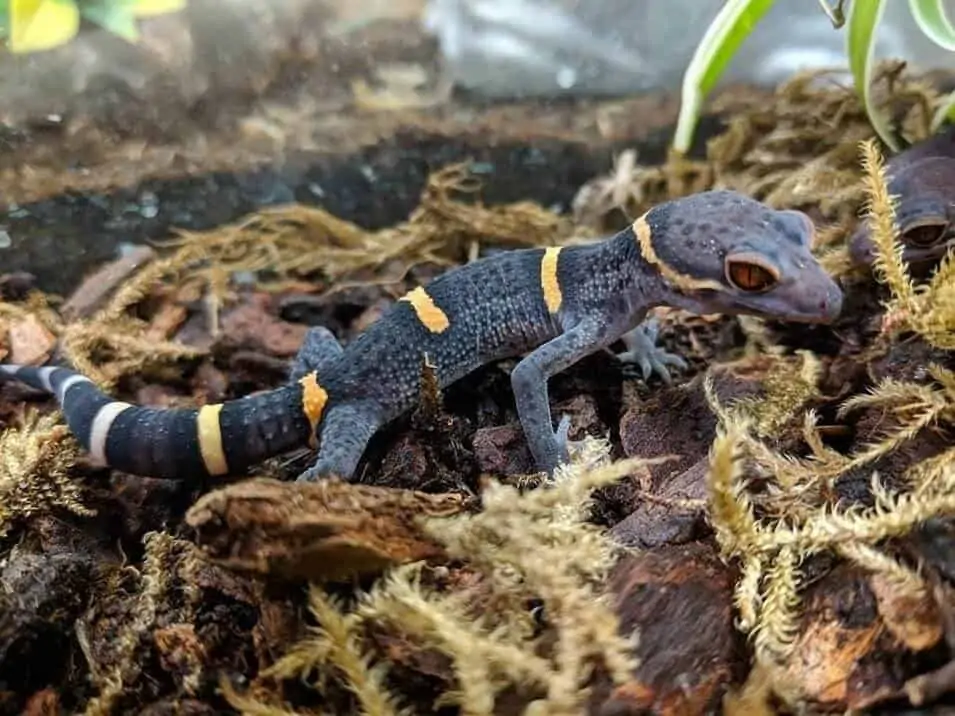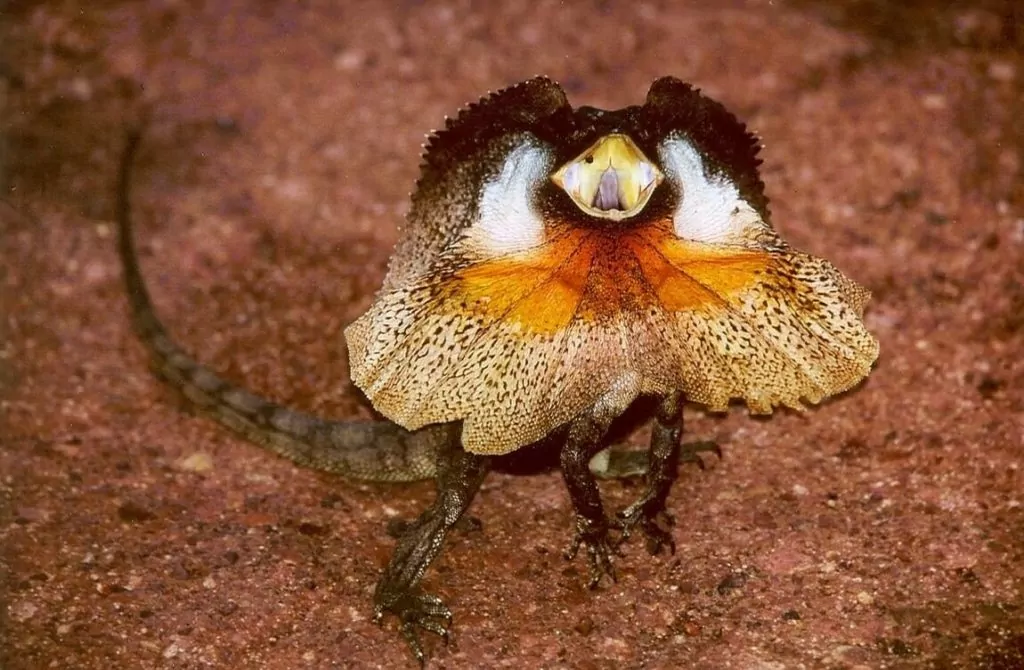Bearded dragon tail rot is something that all owners need to be familiar with. It’s a very common condition, and be quite dangerous if left untreated.
But many new owners don’t know much about it.
Honestly, this really isn’t their fault. They’re told “watch out for tail rot” from whoever they buy their lizard from, with maybe a few quick tips thrown in if they’re lucky.
And that’s not enough.
That’s why we put together this comprehensive guide on bearded dragon tail rot. You’ll learn about the causes, symptoms, treatment, and more.
Table of Contents
Symptoms Of Tail Rot In Bearded Dragons
There are several clear symptoms of bearded dragon tail rot that every owner should be on the lookout for. These symptoms can progress rapidly and become more and more uncomfortable for your pet.
Here are some common symptoms of tail rot that you should be aware of:
- Bottom of the tail turning black: This is caused by that region being so infected that the tissue of the tail is literally dying
- Dehydration: Their tail will feel dry with coarse flakes
- Decay and separation: Eventually, their tail will continue to decay to the point where it will rot and fall completely off
Expert Tip: It is important to note that if their tail falls off there’s a strong likelihood that the infection has now spread into the body of your bearded dragon. As you can imagine, this is a very serious issue.
Bearded dragon tail rot will lead to behavioral symptoms as well. Here are some of the most common ones:
- Your bearded dragon may lose its appetite
- The lizard might become somewhat irritable or aggressive (they might even start to bite)
- You might note that your bearded dragon seems withdrawn and is hiding out in their enclosure
- They might start to show indications of pain or discomfort when their tail touches something
How Dangerous Is It?
Tail rot in a bearded dragon is very serious. This occurs due to some form of trauma and the tail area becoming infected as a result.
Often, a first-time bearded dragon owner will fail to spot the problem until it has developed into a more serious issue. Sometimes owners don’t catch it until the tail falls off completely!
If things get to that point, it’s definitely a serious emergency that requires vet intervention. The internal infection may spread throughout the body causing organ failure if not treated promptly.
Causes Of Tail Rot
There are several causes of tail rot that bearded dragon owners need to know. Usually, the initial cause is the bearded dragon suffering some type of trauma to its tail area.
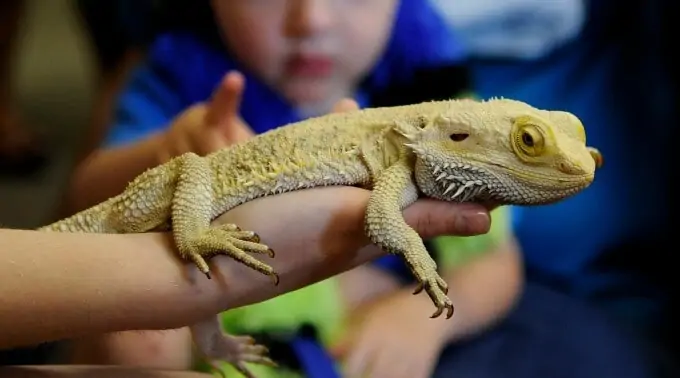
This could be a bite from another lizard or even just a bad cut. Its tail could also be pinched, crushed otherwise injured. After an injury occurs, it usually isn’t long before an internal infection sets in.
Other known possible causes of tail rot include poor nutritional status. Lizards that become seriously malnourished likely have low calcium levels necessary for strong bone and cartilage growth (which impacts their potential size).
Lack of necessary calcium then makes the bearded dragon’s bony structures and the tail to become weak until the infection becomes so bad that the tail begins to rot.
Like their human owners, bearded dragons need enough exposure to natural sunlight specifically UVB rays. This ensures a healthy vitamin D presence needed to digest the calcium every dragon needs for strong bones and body structures. To provide this, get them a high-quality UVB light.
Expert Tip: One clarification to pay attention to is that some bearded dragons already have a black-hued tail. In this case, the appearance of a black shaded tail may not indicate tail rot unless the tail shows serious dehydration, scaly skin layers, and intense dryness.
Although tail rot often becomes an internal infection, this may not always be the case. Bearded dragons go through a shedding process. If the shed skin doesn’t become detached as it’s supposed to, this could result in some of the symptoms of tail rot.
Along with the obvious rotting of the tail, a bearded dragon may also develop rot of the feet as well. This often occurs when more than one bearded dragon is kept in the same enclosure.
Poor nutrition and lack of a clean and sanitary environment are also known causes.
How To Treat Bearded Dragon Tail Rot At Home
If your bearded dragon is showing later stages of tail rot, such as a blackened tail that starts near the tip and progresses up towards the body, it’s usually wise to see a vet for immediate emergency care.
The vet may prescribe antibiotics and other medications if an infection is present. While we always recommend going to a vet, there are some home remedies that owners have had success with as well.
You’ll start by mixing up 3 parts water with 1 part Betadine. Stir until the mix looks like a dark tea.
- Aqueous solution of povidone-iodine 10% that kills germs promptly in minor cuts, scrapes and burns
- Works on a broad range of germs and microbes
- Helps stop infections before they start
- Trusted and used in hospitals for over 50 years
Firmly yet not roughly, dip the affected tail into the liquid and hold it there for approximately 5 minutes. Keep these areas submerged to soak up the naturally anti-bacterial cleansing solution.
If your bearded dragon is especially wiggly, you might need to repeat this process several times until the tail has been submerged for that full 5 minute time frame.
Afterward, dab wet tail with a dry and softly absorbent paper towel or clean cloth. This should be done very gently, as a rotting tail is fragile and easily broken.
When the tail has dried completely, dab on some triple antibiotic ointment, like plain Neosporin, onto the affected area.
Expert Tip: Do not use any topical medications that contain pain relief ingredients like Lidocaine a common topical numbing ointment often used in dental procedures, for healing small scrapes or other lesions.
Perform the above tail soaking procedure every day 2 to 3 times for a minimum of 1 week and preferably 2 weeks. Note that some antibiotics can be too strong for the small dragon.
Always consult a veterinarian trained in reptile care for medication and further treatment recommendations.
When Should You Consult A Vet?
We like to play it safe, so our answer is immediately after you notice symptoms. Ideally, you should take your ailing lizard to a veterinarian with experience in treating exotic reptiles like the bearded dragon.
This is especially true if your bearded dragon’s tail has already fallen off, has darkened considerably, or if the lizard is displaying other tail rot symptoms like aggression, withdrawn behavior, lack of appetite or appears in pain. These symptoms make it even more critical to find a veterinarian practice nearby that cares for these creatures for an emergency treatment visit.
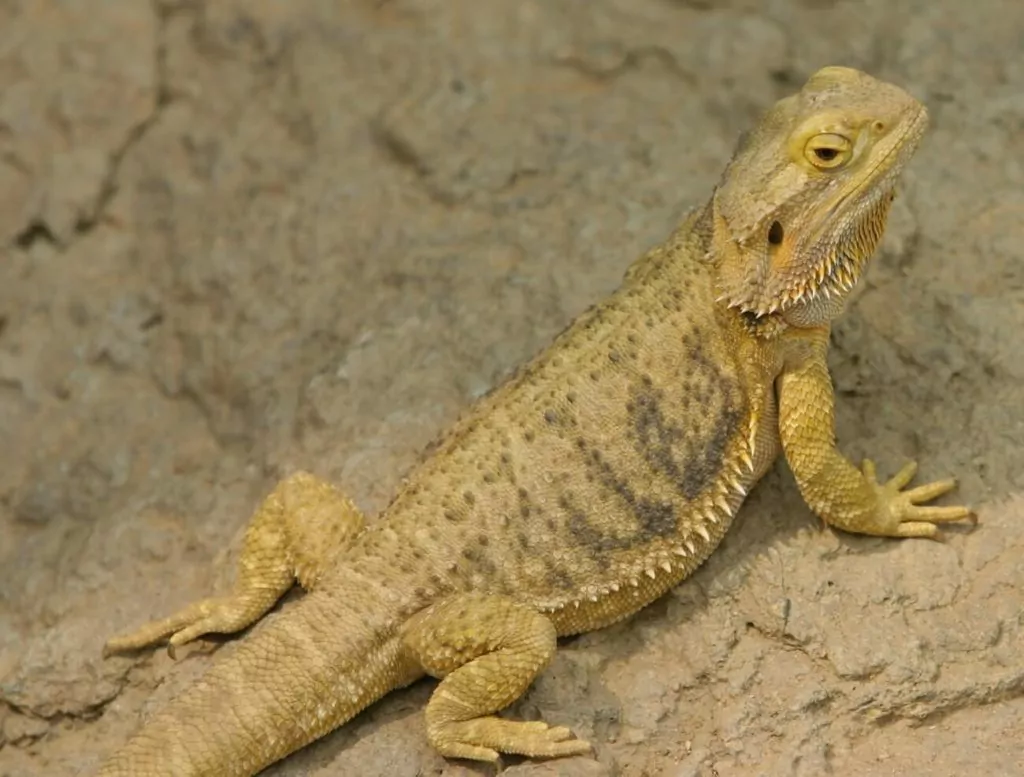
The vet will decide if an emergency tail amputation is necessary to hopefully bring your lizard back to its previous healthy state before the problem developed. A surgical tail amputation that removes the decaying tissue can prevent the issue from progressing to the rest of the body.
While it might seem extreme, this amputation may be what saves your pet. Afterward, follow your vet’s post-surgical instructions exactly.
Keep your pet hydrated with clean water especially if the veterinarian prescribed antibiotics for your lizard. These antibiotics are often harder on smaller creatures like a bearded dragon.
Sometimes, the veterinarian will determine the probable infection source isn’t serious enough to warrant a partial amputation and may order antibiotic therapy, and Betadine water soaks.
How To Prevent Tail Rot In The Future
Prevention of tail rot is always better than waiting until treatment is required. Here are some tried and true ways to help ensure that tail rot is prevented effectively in the near future:
- Buy your bearded dragons from reputable pet shops or private sellers
- Research and pick the healthiest specimen
- House your bearded dragon in a solitary enclosure or contained area
- Feed them high-quality nutritious food
- Always double-check their enclosure for potential safety concerns before use
- Ensure that your reptile gets the necessary amount of UVB exposure to maintain healthy bones and cartilage
- Never pull away hanging shed skin or scales during the process. This usually just makes things worse.
- Keep your bearded dragon’s enclosure meticulously cleaned and aired out
- Get your pet examined by a vet that’s experienced in reptile care
- Consult with your vet if the symptoms of tail rot don’t improve (in mild cases) within a week or so, or if the symptoms worsen
- Provide your bearded dragon with a calm, low-stress environment. Elevated stress levels can lead to health complications later on.
Expert Tip: Also, watch out for insects that may be attracted to a dirty cage. Some bugs can bite bearded dragons, possibly leading to tail rot at some point in the future.
A bearded dragon that appears to be itching its tail might have mites or other bug infestation. Crickets are actually notorious for biting bearded dragons!
Now You’re Prepared
As you can see, tail rot in bearded dragons isn’t something you need to fear. Like anything, it becomes much less intimidating once you understand it!
But now that you have the necessary knowledge, it’s your job to avoid the most common trap owners fall into:
Complacency.
After a while, it becomes easier and easier to become less consistent and vigilant with care in general. After all, nothing bad has happened yet, right?
But you need to fight that!
The mark of a good owner is being dedicated and looking after their bearded dragon each and every day. Remember, they need you to survive!
Establish a schedule and stay committed to it. This will not only keep bearded dragon tail rot at bay, but it will result in your pet living a long and happy life.

